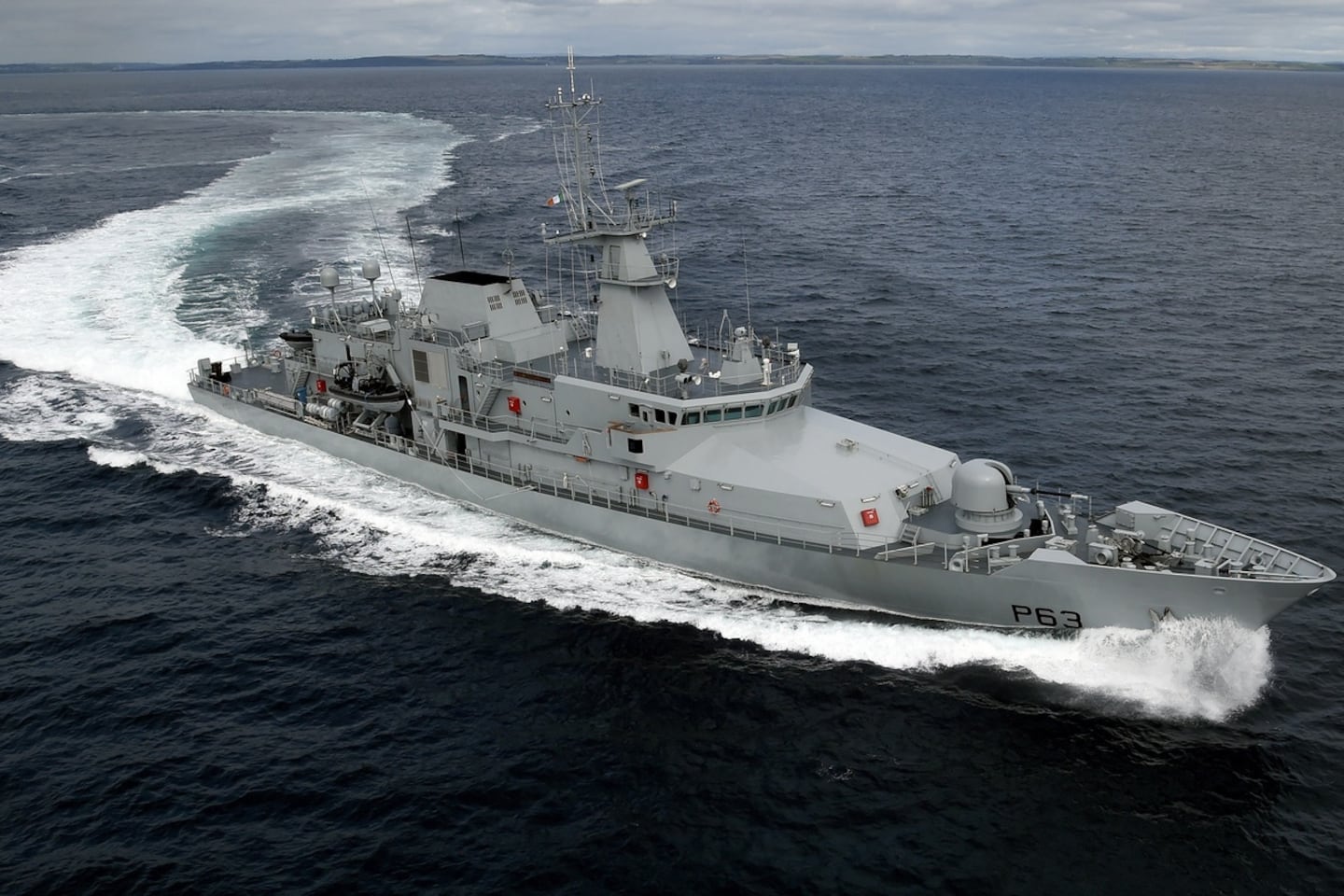The Naval Service is currently sending out an average of one ship per day to monitor Ireland’s vast territorial waters, despite Government warnings of maritime threats from foreign militaries and organised crime groups.
This year, Ireland’s naval ships are on course to carry out the fewest number of patrol days in decades as a result of two-thirds of the fleet being tied up due to manpower shortages.
Until the middle of July, 214 patrol days had been carried out, or slightly more than seven per week. If this trend continues, there will be fewer than 400 patrol days this year.
This represents a 23 per cent decrease on last year and a 71 per cent decrease since 2017, the year naval manpower started to decline dramatically.
READ MORE
In the late 2010s, when the Naval Service had an eight-ship fleet, it carried out about 27 patrol days per week. These monitored the country’s 437,500sq km of maritime territory, an area seven times the size of Ireland’s land mass, for illegal fishing, smuggling and security threats.
Currently, the Naval Service is carrying out just 7.6 patrol days per week to monitor the same area.
Over the last 12 months, a maximum of two ships have been available for patrol at any one time. Often only one ship is on duty. Four of the Naval Service’s six ships are tied up or in reserve at any one time.
The departure of large numbers of trained sailors for the private sector, particularly those trained in specialised engineering roles, is the main limiting factor on patrol days.
There are currently 718 personnel in the Naval Service, 65 per cent of its establishment strength of 1,094.
Last month, the Government published its first Defence Policy Review, which named the maritime domain as an area in need of urgent attention.
[ Naval Service’s two inshore patrol vessels named LÉ Aoibhinn and the LÉ GobnaitOpens in new window ]
It said extensive undersea communication lines, as well as fishery protection and the protection of offshore energy infrastructure, made maritime security “a priority action area for the Government”.
Russian naval activity in the North Atlantic “points to the potential for maritime or hybrid attacks against critical infrastructure”, it said. “The use of Ireland’s maritime domain as a conduit for illicit activities by organised crime groups also poses a risk in this domain.”
Government and military officials have taken a number of steps regarding maritime security, including a planned National Maritime Security Strategy (NMSS).
Two new inshore patrol vessels are also expected to enter service soon. These smaller vessels will require fewer crew but will have more limited range and endurance.
The Defence Forces has paid more than €6 million to an external recruitment agency to help boost numbers.
- Sign up for push alerts and have the best news, analysis and comment delivered directly to your phone
- Join The Irish Times on WhatsApp and stay up to date
- Listen to our Inside Politics podcast for the best political chat and analysis










